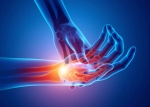Home »
Blog » Pain Management
| Stem Cell, PRP, Acupuncture in Queens & Long Island, New York
Pain Management | Stem Cell, PRP, Acupuncture in Queens & Long Island, New York
Maybe you’re one of the lucky people who haven’t had to deal with hand pain. But even so, you can easily imagine what your day would be like all the things you would struggle to do if you couldn’t use your hand. The medical team understands how important it is to regain full, pain-free function in your hands. They use advanced diagnostic tools to determine the source of your pain. Then they create customized treatment plans that draw from an array of medical specialties to overcome hand problems as quickly as possible.
Read more
Comprehensive & Effective Treatments - The spine is made up of four areas: the cervical (neck), thoracic (upper back), lumbar (lower back), and sacral region (bottom of the spine). Each area of the spine is connected to and surrounded by joints, muscles, tendons, ligaments, and nerves. All of these structures combined make up the back. When exposed to injury, trauma, or a chronic condition, any of these structures can cause pain that can radiate into multiple areas of the back.
Read more
Your mind and body are not designed to withstand being in pain for a prolonged period. Therefore, chronic pain, which lasts for 3 months or more, can take its toll on the mind and body. Let’s get to the specific effects. Low Mood, Anxiety, And Depression - One of the biggest impacts chronic pain has on our brains is how it affects our mood. Being in pain on its own can be taxing emotionally, but when you pair that with the effects chronic pain can have on our lives, things can get tough.
Read more
Alternative And Complementary Treatments - By alternative, we simply mean that these treatments may not be backed by as much medical science as other treatments as explained in this study. This can sometimes mean that they can be harder to access through your doctor. You may need to access them privately.
Read more
About Pain Medication - There are several conditions, injuries, and disorders that can cause chronic pain in the body. From migraines to back pain, chronic pain can decrease an individual’s quality of life and make them dependent on others to take care of them. The pain management physician provides temporary pain medication management to help his patients manage their chronic pain.
Read more
While medication can be helpful, there are other ways to manage your chronic pain. This article takes you through your other options to help you make an informed decision. For many people, over-the-counter painkillers and anti-inflammatories can help to take the edge off their chronic pain. Doctors often prescribe a range of stronger medications for pain patients.
Read more
Finding Advanced Solutions for Pain Relief - Muscle pain can come from a variety of symptoms, infections, autoimmune disorders, and much more. It is one of the most common types of pain with more than 80% of U.S. adults experiencing some form of acute muscle pain sometime in their lives. In fact, the second most common reason people visit their doctor is for lower back pain.
Read more
Chronic pain can lead to suicidal thoughts and even suicidal actions. With chronic pain affecting a high percentage of the population, this is a rising problem that must be addressed. Leaving this issue unchecked is literally fatal. This study on the subject states that “individuals with chronic pain are at least twice as likely to report suicidal behaviors or to complete suicide”.
Read more
Abdominal pain is often associated with an acute, severe attack caused by problems like appendicitis, diverticulitis, and pancreatitis. But anywhere from 8-54% of adults suffer from chronic abdominal pain that goes on for months. Ignoring abdominal pain only puts your health at risk as the underlying cause gets worse. You can prevent serious complications when you seek help for your pain.
Read more
How Do You Get Joint Pain? Individuals who engage in physical activity are at higher risk of straining their joints. Generally, trauma to the soft tissues around your joints will result in some form of inflammation in the tendons, causing them to possibly rupture, strain, or dislocate and fracture a bone.
Read more
Love this Post? Spread the World






















